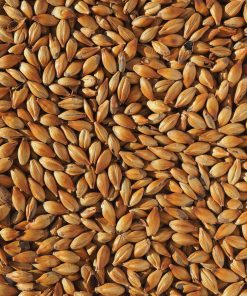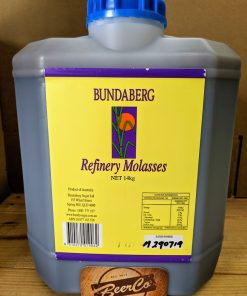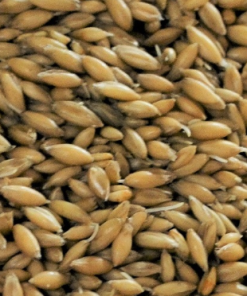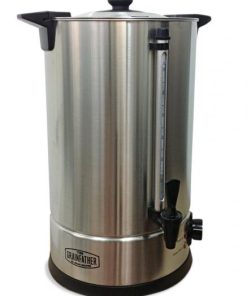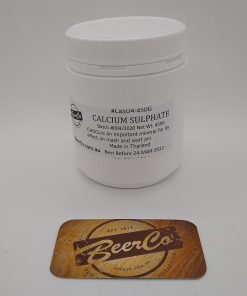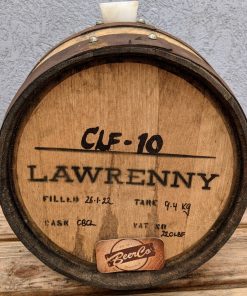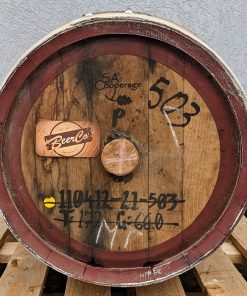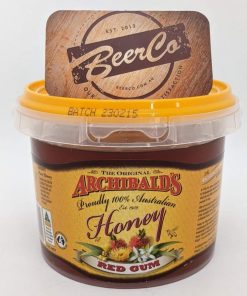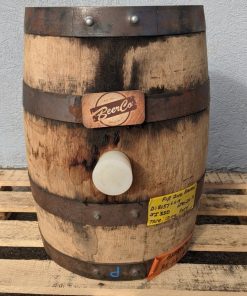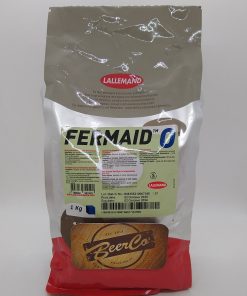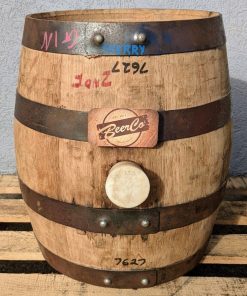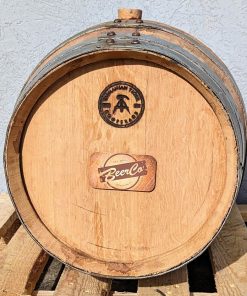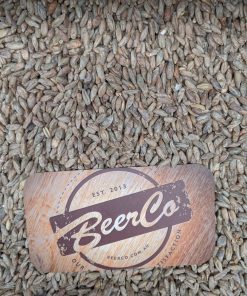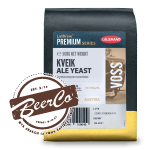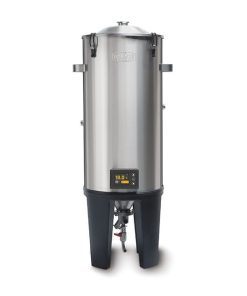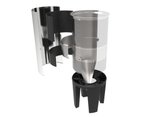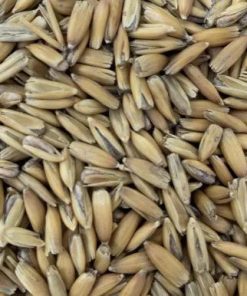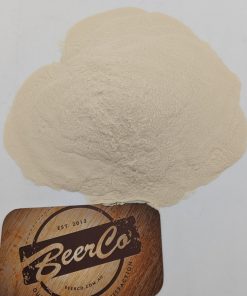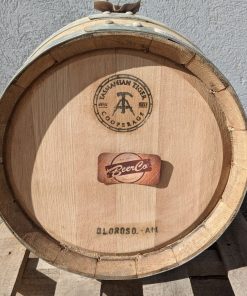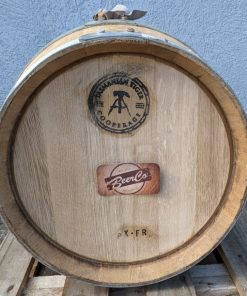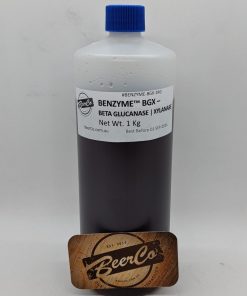Magnesium Sulphate Redox
$ 6,95 $ 4,17
Magnesium Sulphate aka Epsom Salt MgSO4 * 7H20 is an important mineral for its effect on mash and wort pH. It is used as a brewing salt in brewing to adjust the ion content of the wort and enhance enzyme action in the mash to promote a desired flavour profile in the beer.
Lowers pH by a small amount.
Can be used to add sulfate “crispness” to the hop bitterness. Often used at half the levels of Gypsum. 1 gram in 1 gallon changes the salt levels by 103 ppm sulfate, 26 ppm Magnesium and adds 108 ppm to the hardness.
Epsom salt is also ideal as a nutrient source for growing hop plants.
Feeling sore after brewing happy all day and night and your hands or feet are aching, try adding 55g of epsom salt to 5 Litres of hot water and soak for ten minutes. Temporarily relieves pain.
Pack Sizes:
- 450g Plastic Jar
Sulfate enhances hop bittering, but must be balanced with chlorides. Magnesium has a low ppm threshold for being safe (brewing range 0-30 ppm), so use this one sparingly.
Pack Sizes:
- 450g Plastic Jar
- 25 Kg Bag (SAVE 55% OFF 450g Price) Sign Up for Trade/Wholesale Account
Target ranges for mineral levels in beer brewing:
Flavor Ions:
- Calcium (Ca+2) – target range of 50-150 ppm
- Magnesium (Mg+2) – target range of 0-30 ppm
- Sulfate (SO4-2)- target range 50-150 ppm for normal beers, 150-350ppm for highly bitter beers.
- Sodium (Na+) – target range 0-150 ppm
- Chloride (Cl–) – target range 0-250 ppm.
Harmful levels:
Concentrations above these levels are harmful to the beer, and much beyond they become harmful to our health!
- Calcium (Ca+2) – 250 ppm
- Magnesium (Mg+2) – 50 ppm
- Sulfate (SO4-2) – above 750 ppm
- Sodium (Na+) – above 200 ppm
- Chloride (Cl–) – above 300 ppm
Sulphate and Chloride should be balanced in beer:
- 2:1 SO4 to Cl is good for bitter beer
- 1:2 SO4 to Cl for mild ales
- 1:3 SO4 to Cl for stouts and porters
- Chloride and Sodium add the maltiness of a beer.
- Sulfate highlights bitterness and reduces malt flavor.
Alkalinity Range:
Alkalinity impacts the pH of the mash, a key factor in efficiency. Bicarbonate (HCO3–) – ppm depends on style of beer, lower for lighter beers, higher for darker beers.
- 0-50 for pale beers
- 50-150 for amber beers
- 150-400 for dark beers
Sauces of Brewspiration:
- Palmer, John, How To Brew, 2006
- Daniels, Ray, Designing Great Beers, 1996
| Size | 450g, 25 Kg |
|---|
Fast shipping and professional packing
We offer a wide range of shipping options due to our long-running partnerships with UPS, FedEx and DHL. Our warehouse staff are highly trained and will package your items according to our precise and precise specifications. Before shipping, all goods are thoroughly inspected and securely secured. Every day we ship hundreds of packages to our customers from all over the world. This is a sign of our commitment to be the largest online retailer worldwide. The warehouses are located situated in Europe as much as they are in USA.
Note: Orders containing multiple items will have a different processing period for each item.
Before shipping the items, our staff will carry out an extensive inspection of the products you have ordered. The majority of orders are delivered within 48 hrs. The delivery time should be between 3-7 working days.
Returns
We don't manage the stock in our factory and warehouse. Actual stock levels may fluctuate at any moment. Be aware that it's possible that your order will be out of stock after you have placed the order.
Our policy is for 30 days. Unfortunately, if 30 days have passed from the date you purchased the product, we are unable to offer you a return or exchange.
The item must not be used, and it must be in the original packaging. It must also be in the original packaging.
Related products
Brewing Aids
Brewing Aids
Equipment
Equipment
Brewing Aids



